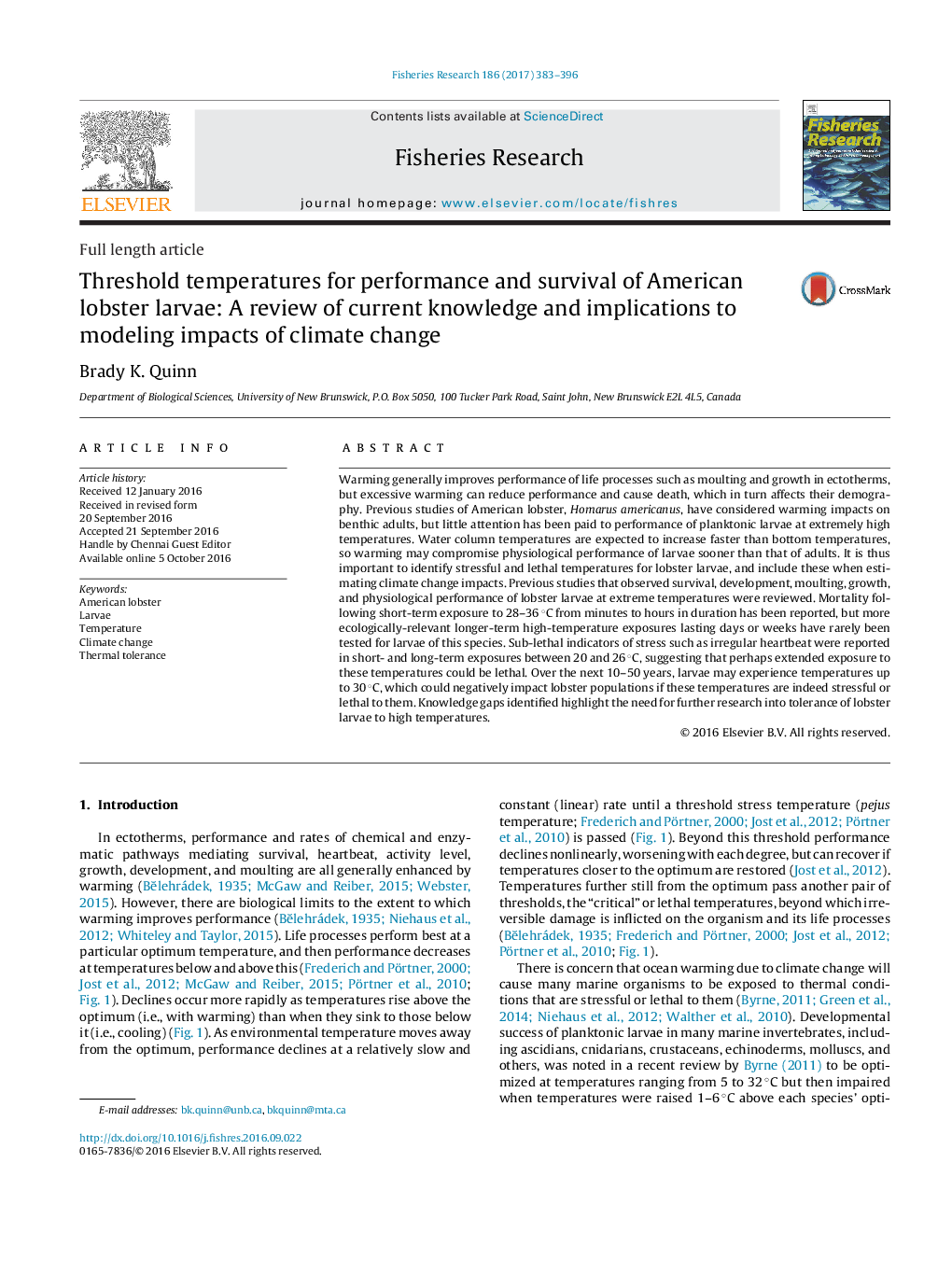| کد مقاله | کد نشریه | سال انتشار | مقاله انگلیسی | نسخه تمام متن |
|---|---|---|---|---|
| 6481993 | 1413079 | 2017 | 14 صفحه PDF | دانلود رایگان |
- Thermal limits to survival, performance, and moulting of American lobster larvae were reviewed.
- Larvae are stressed or die at temperatures â¥24-36 °C, which will be more frequent in the future.
- Moulting, growth, hatching, and settlement of larvae may be reduced or stop above 20-24 °C.
- Previous studies' results need to be confirmed through more rigorous, new studies.
- Stressful temperatures to larvae must be known to predict impacts of climate change on lobsters.
Warming generally improves performance of life processes such as moulting and growth in ectotherms, but excessive warming can reduce performance and cause death, which in turn affects their demography. Previous studies of American lobster, Homarus americanus, have considered warming impacts on benthic adults, but little attention has been paid to performance of planktonic larvae at extremely high temperatures. Water column temperatures are expected to increase faster than bottom temperatures, so warming may compromise physiological performance of larvae sooner than that of adults. It is thus important to identify stressful and lethal temperatures for lobster larvae, and include these when estimating climate change impacts. Previous studies that observed survival, development, moulting, growth, and physiological performance of lobster larvae at extreme temperatures were reviewed. Mortality following short-term exposure to 28-36 °C from minutes to hours in duration has been reported, but more ecologically-relevant longer-term high-temperature exposures lasting days or weeks have rarely been tested for larvae of this species. Sub-lethal indicators of stress such as irregular heartbeat were reported in short- and long-term exposures between 20 and 26 °C, suggesting that perhaps extended exposure to these temperatures could be lethal. Over the next 10-50 years, larvae may experience temperatures up to 30 °C, which could negatively impact lobster populations if these temperatures are indeed stressful or lethal to them. Knowledge gaps identified highlight the need for further research into tolerance of lobster larvae to high temperatures.
Journal: Fisheries Research - Volume 186, Part 1, February 2017, Pages 383-396
